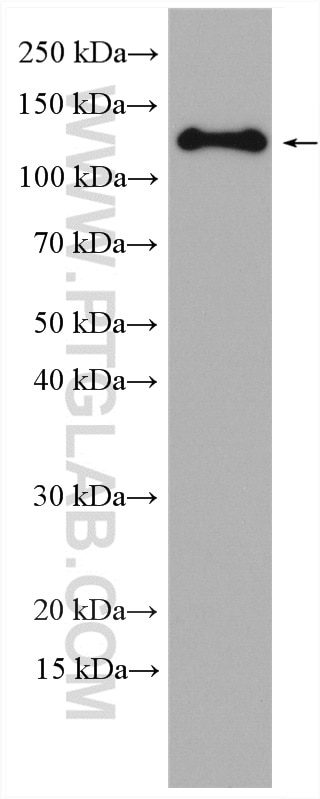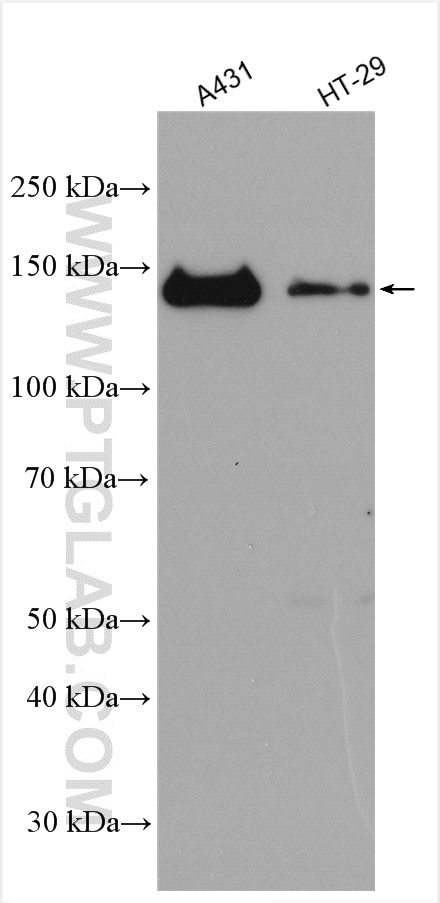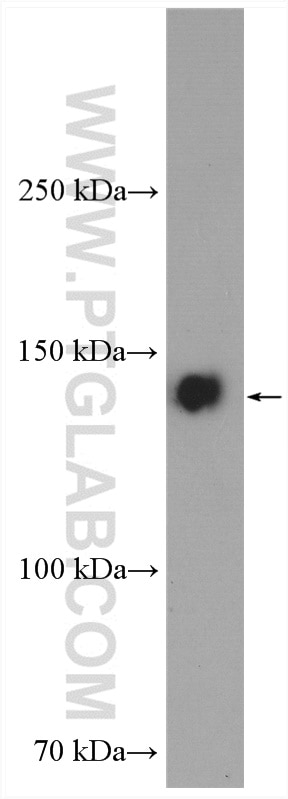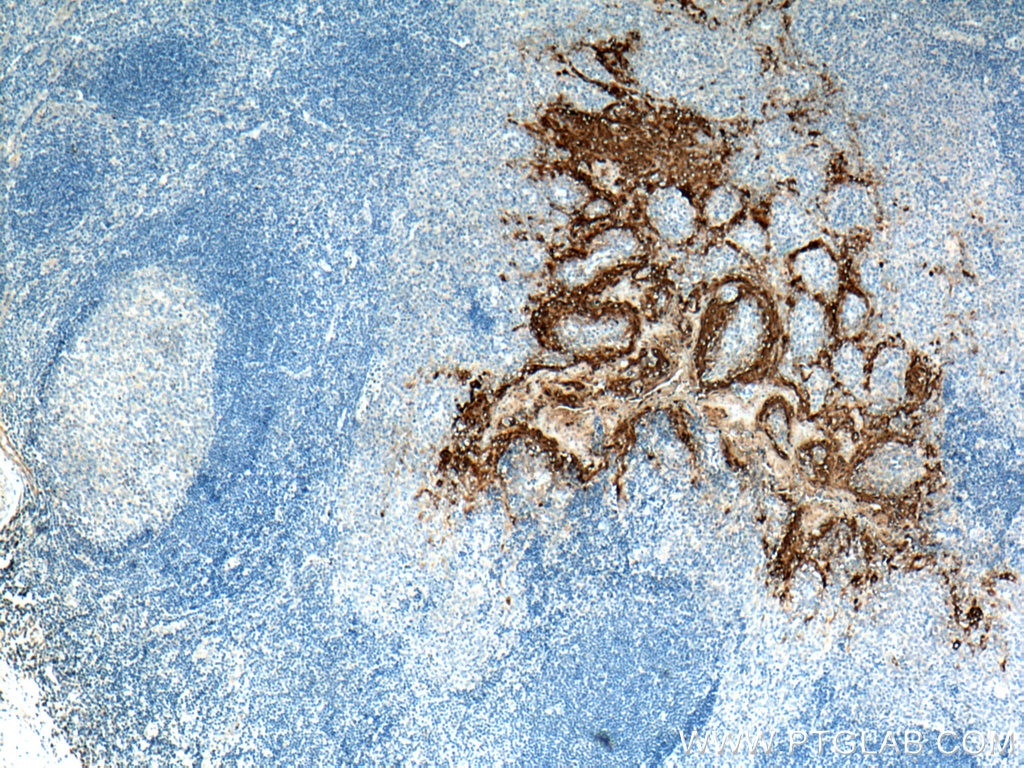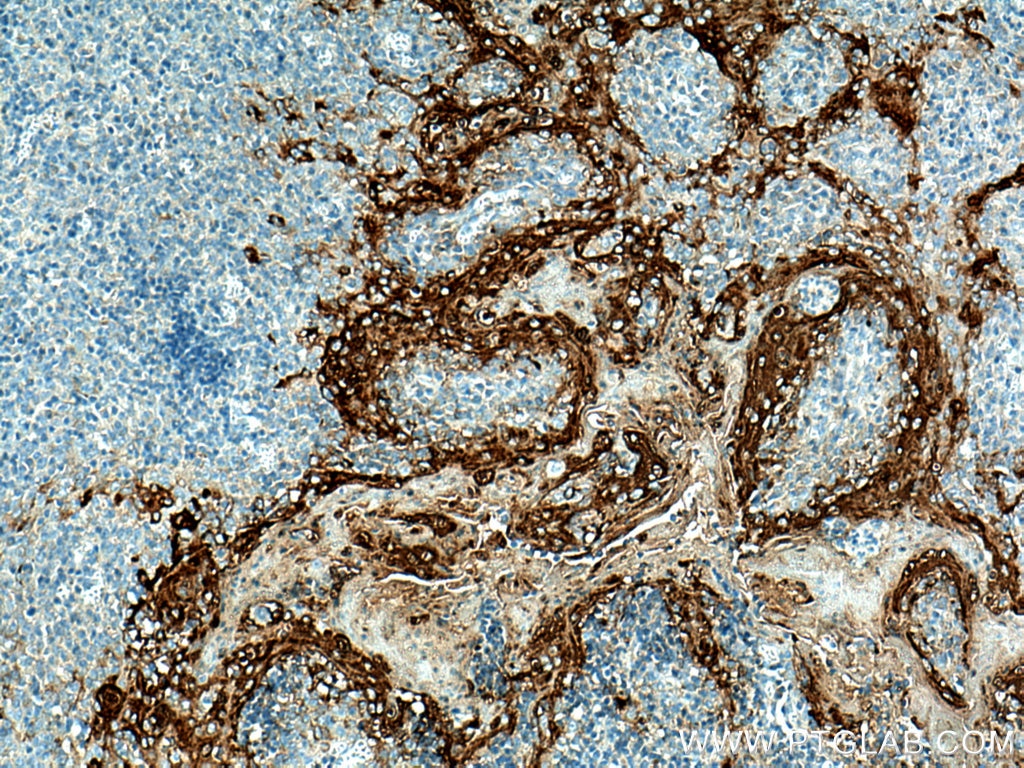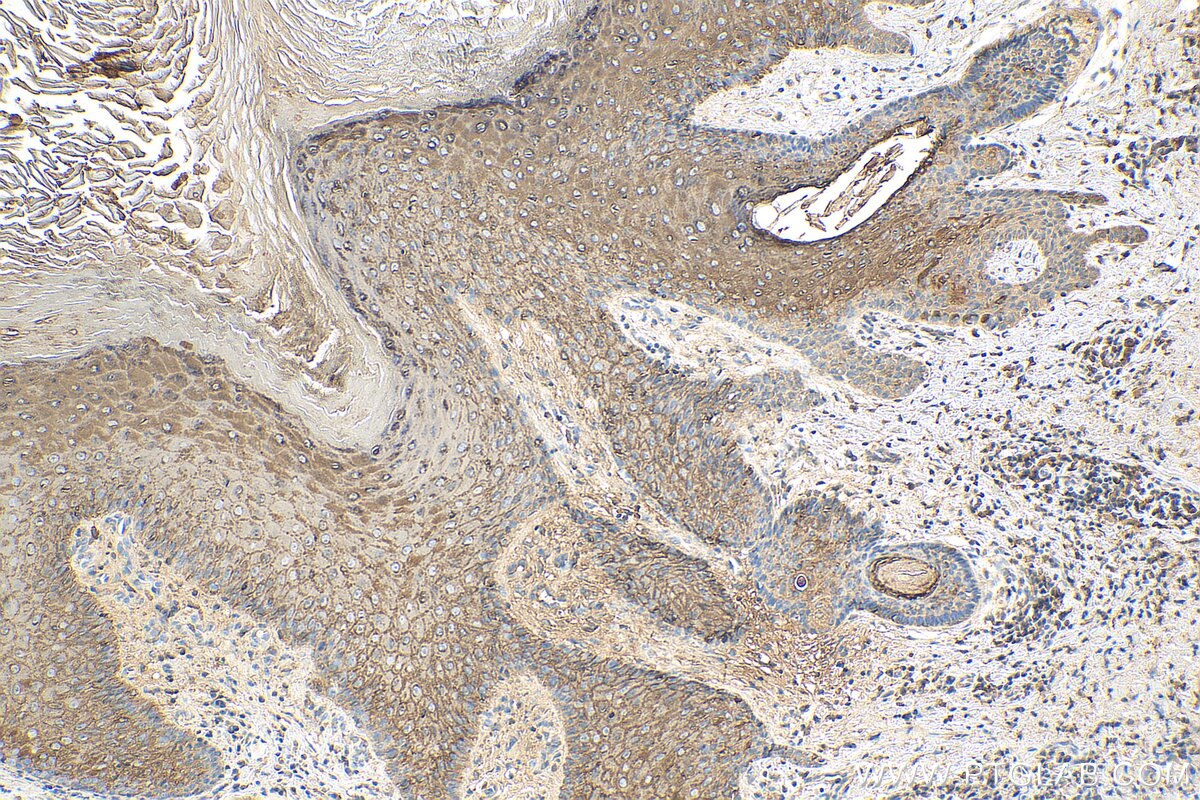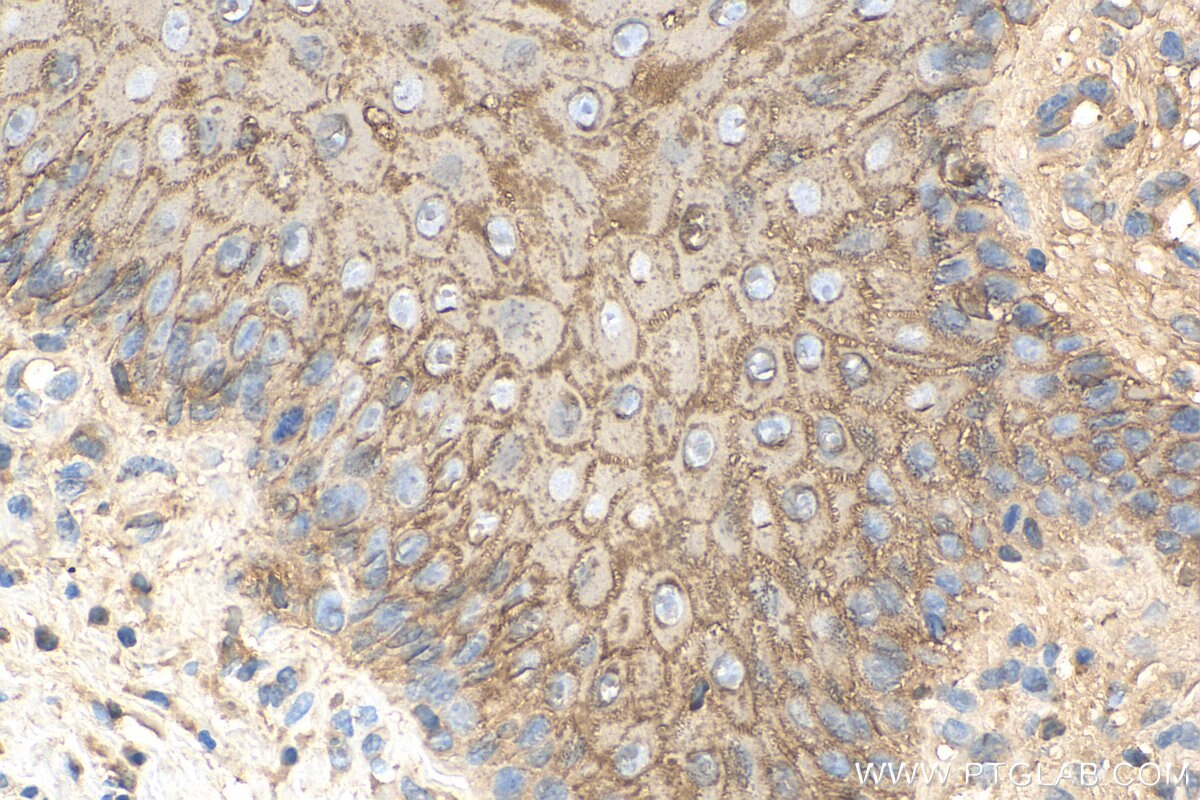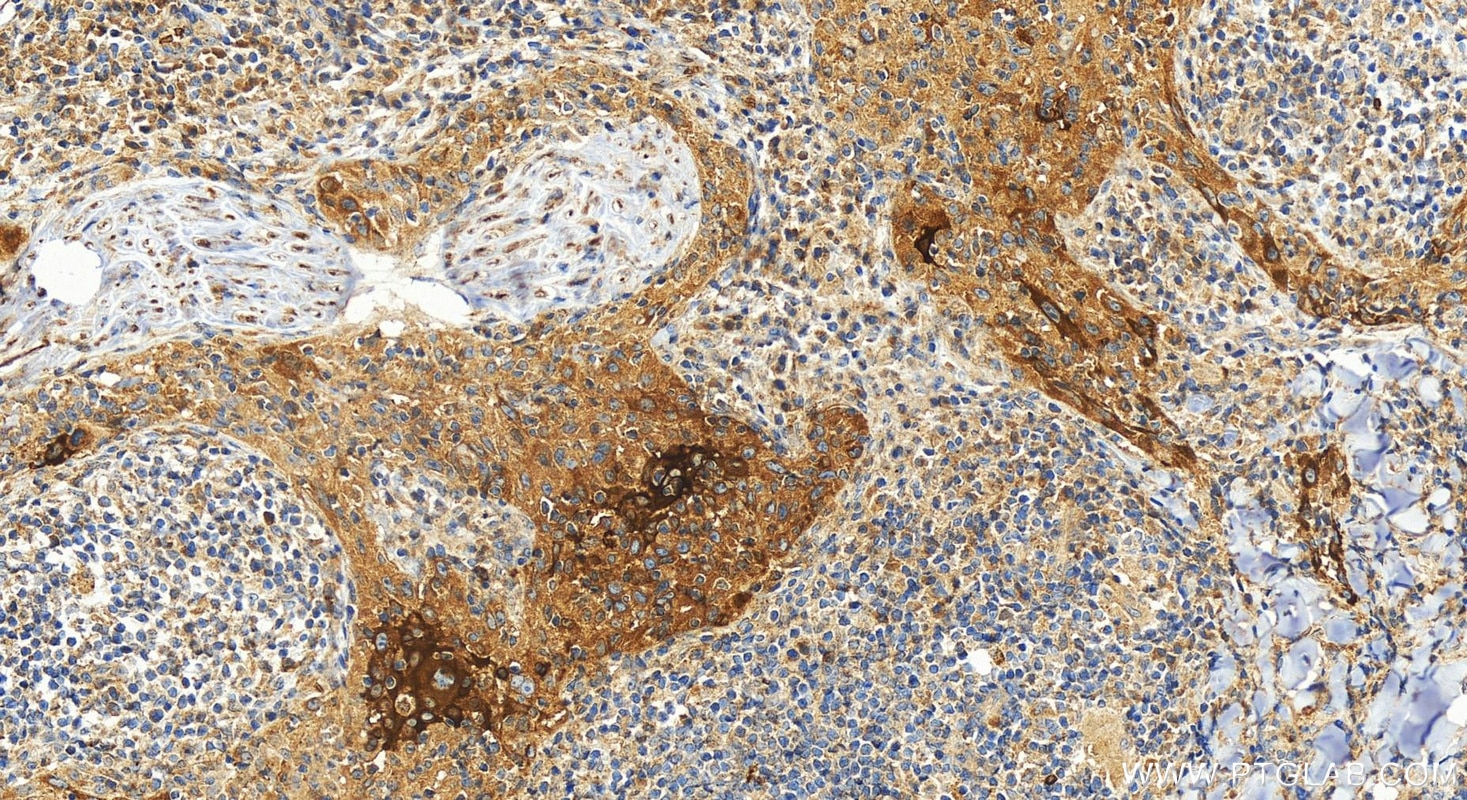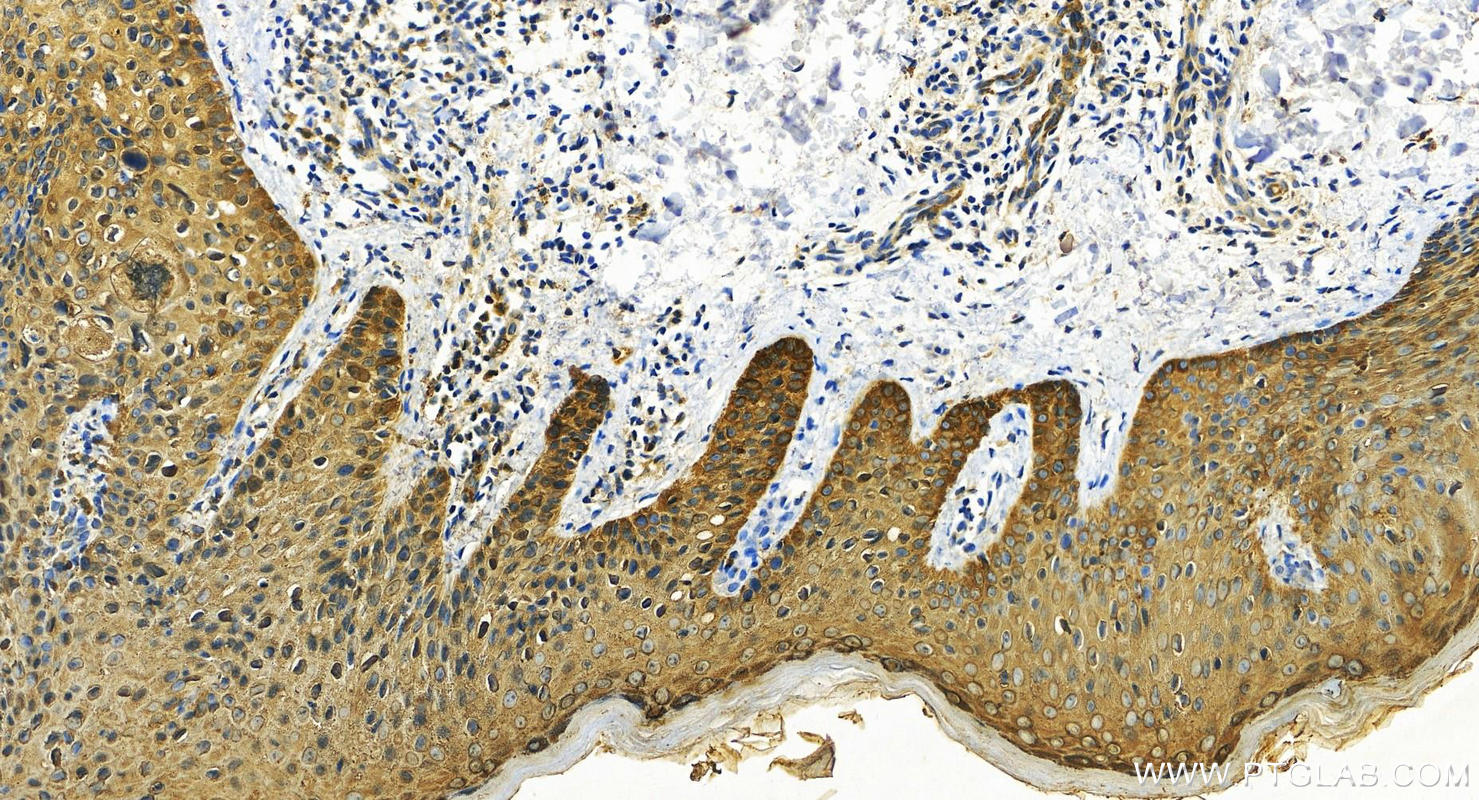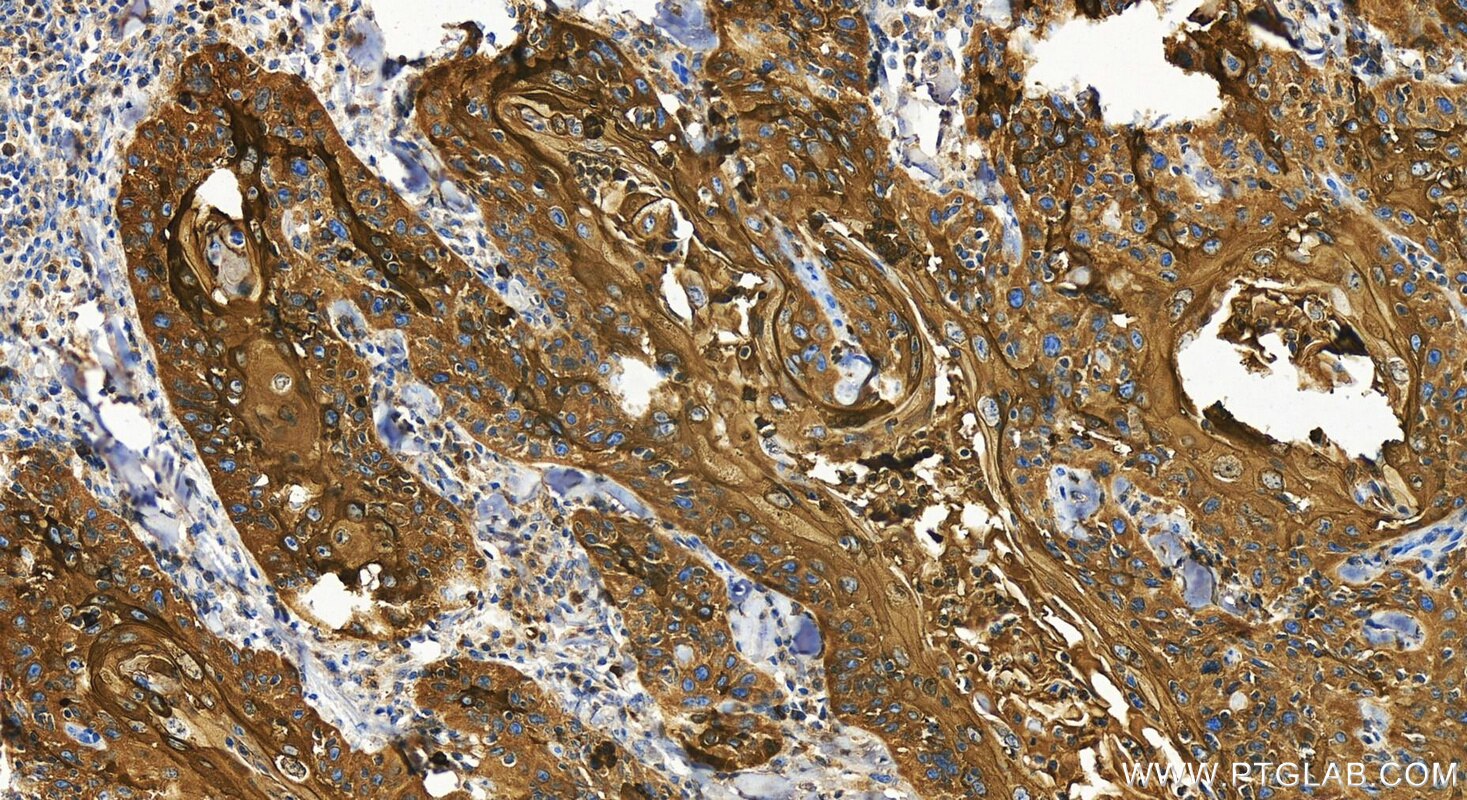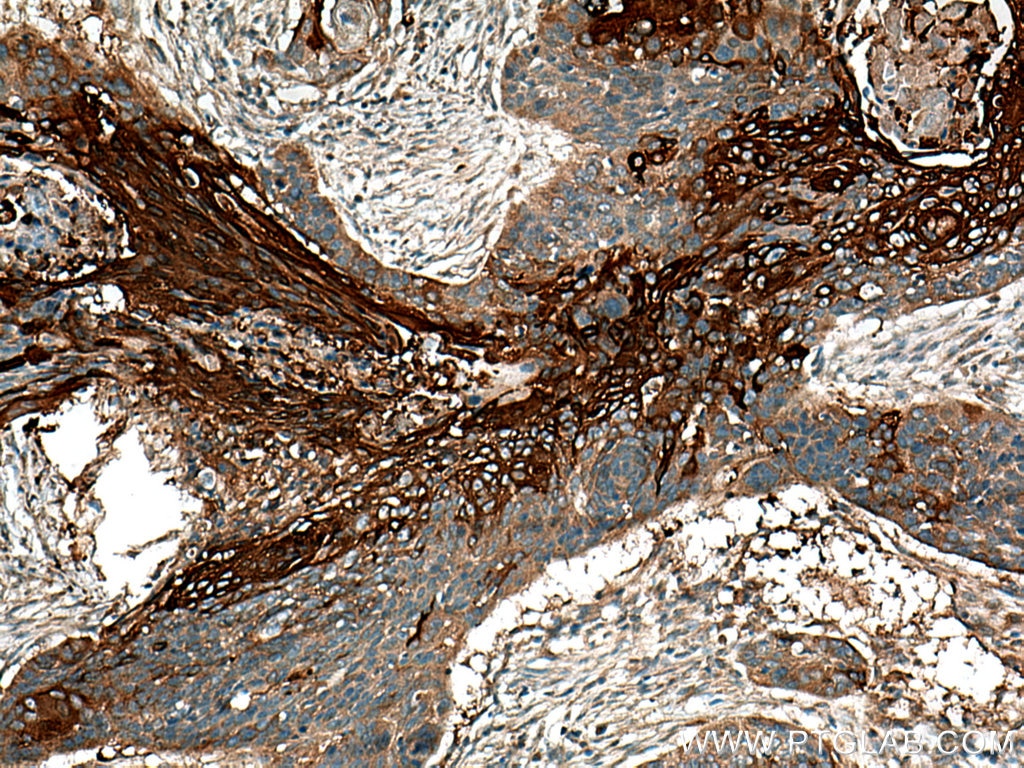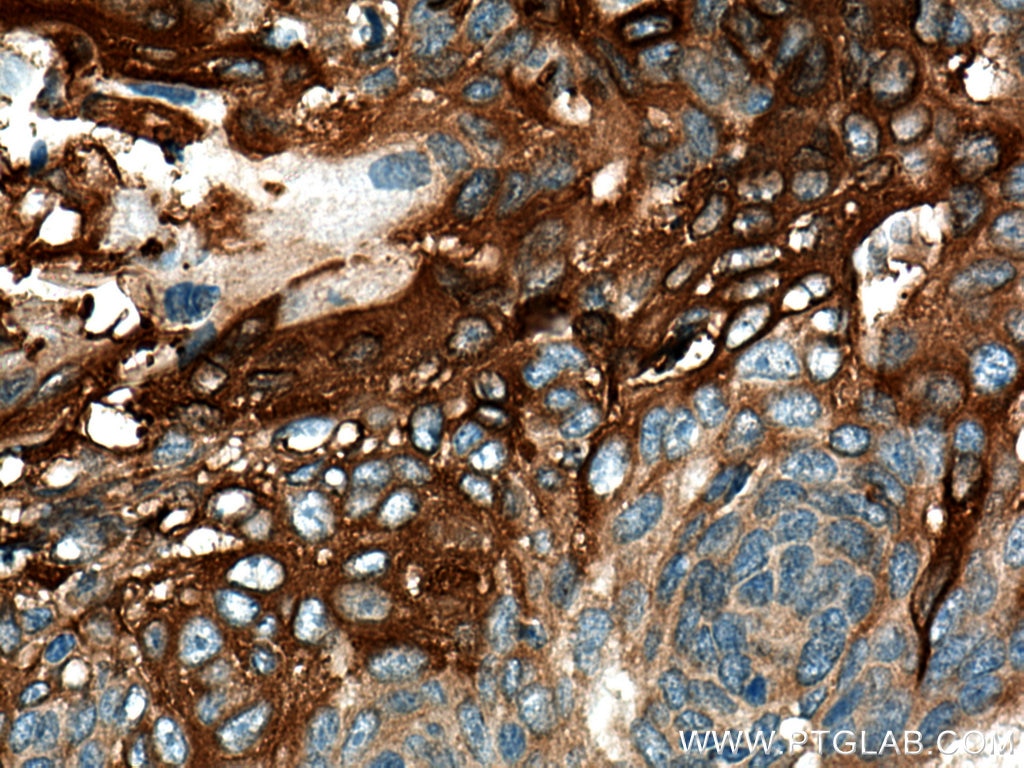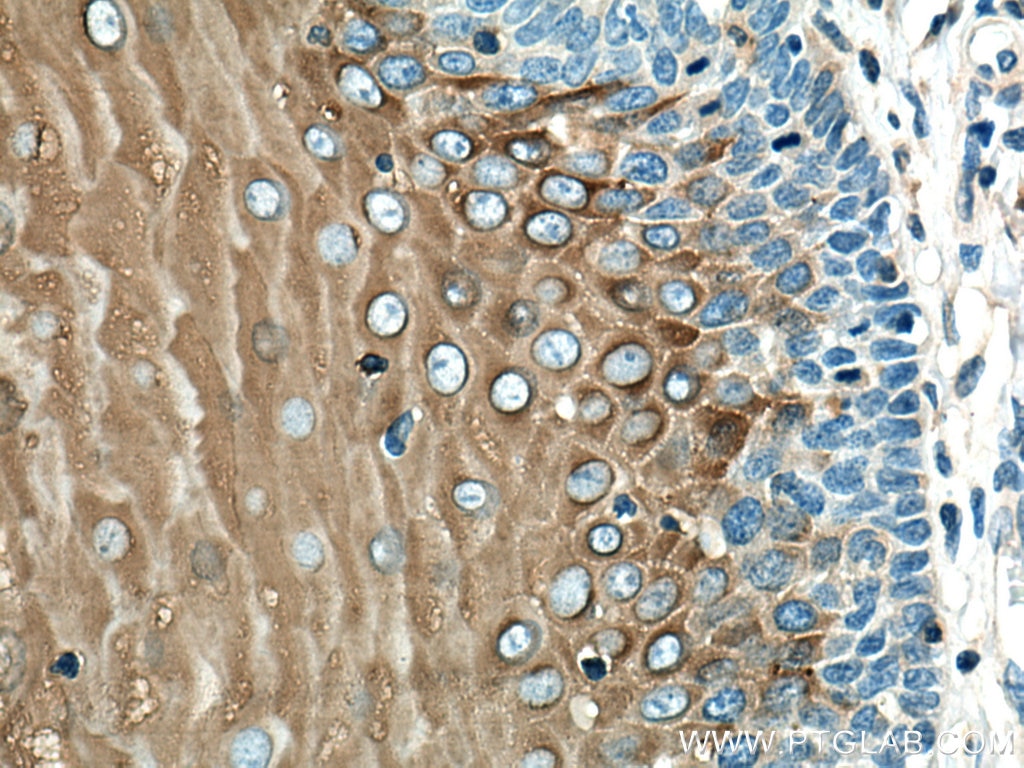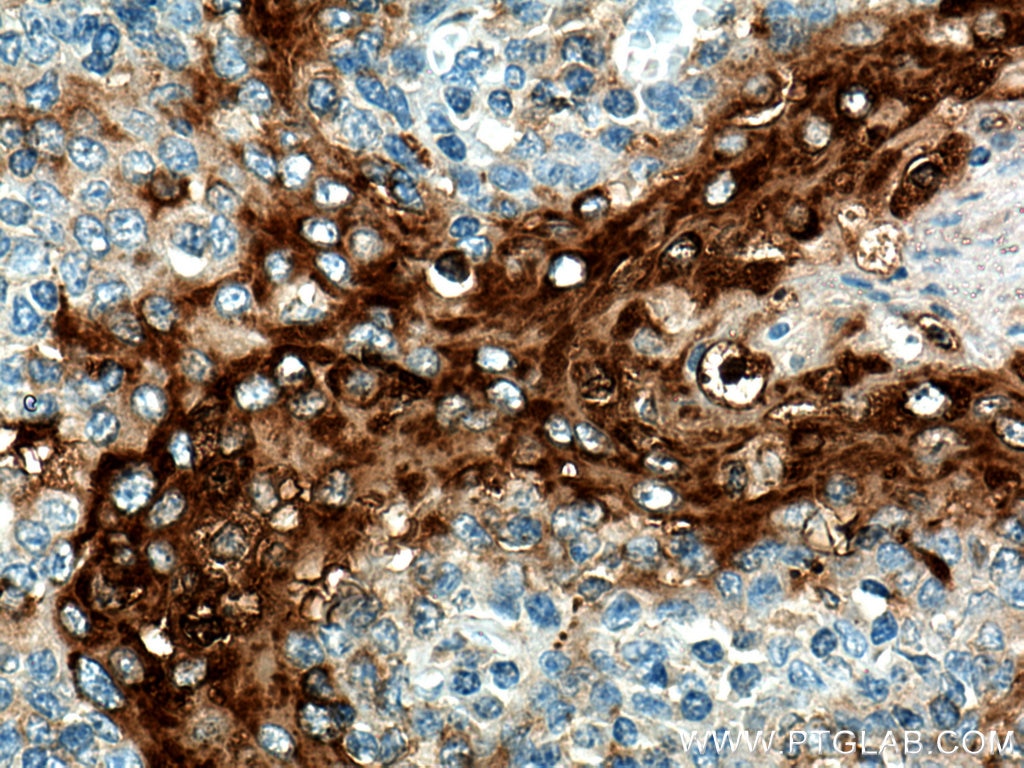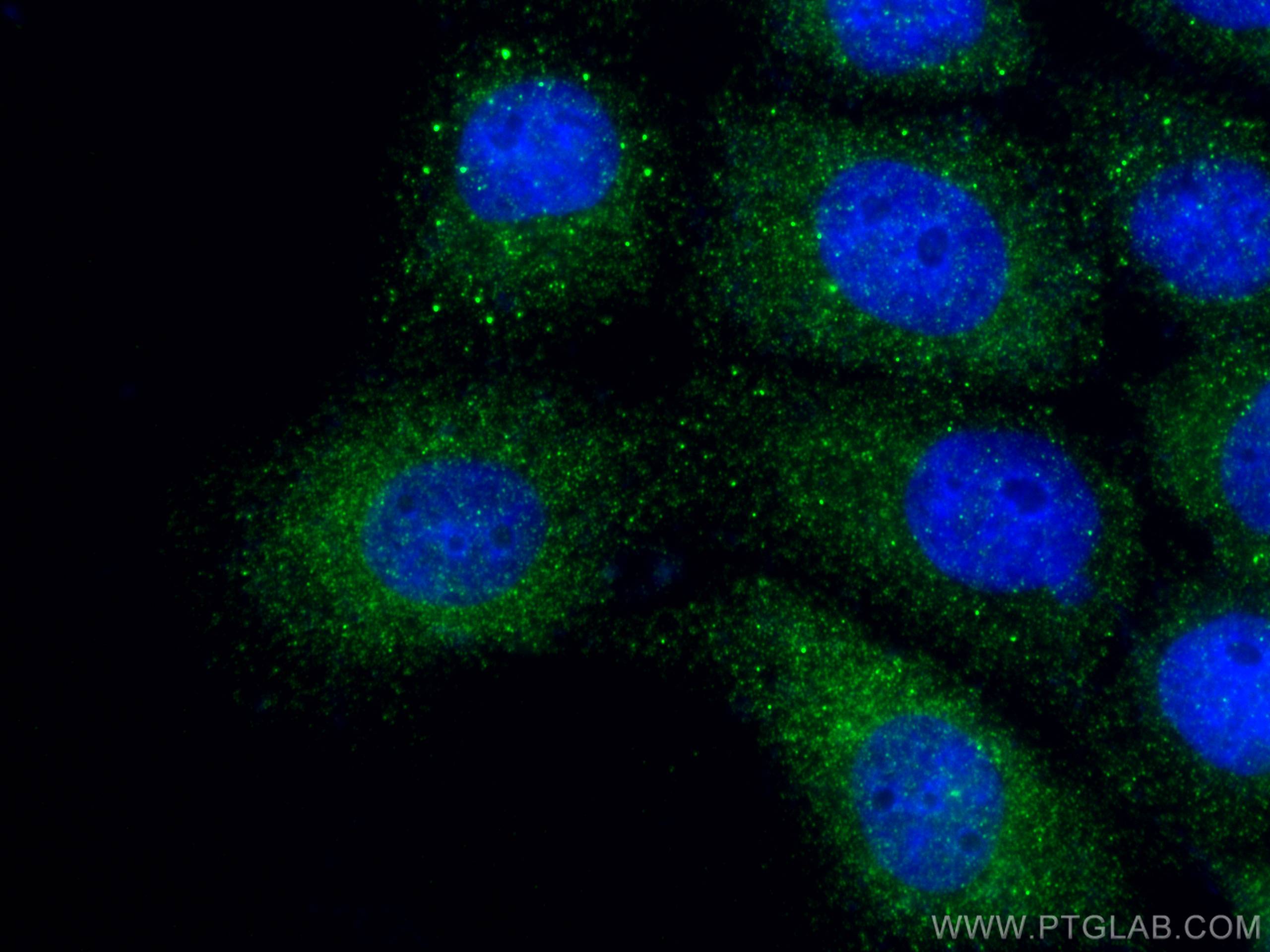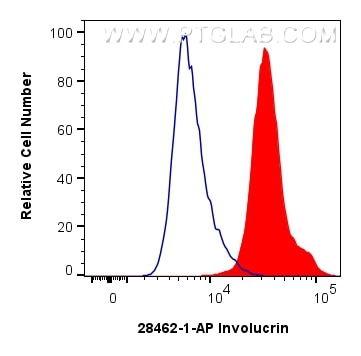Anticorps Polyclonal de lapin anti-Involucrin
Involucrin Polyclonal Antibody for WB, IHC, IF/ICC, FC (Intra), ELISA
Hôte / Isotype
Lapin / IgG
Réactivité testée
Humain et plus (1)
Applications
WB, IHC, IF/ICC, FC (Intra), ELISA
Conjugaison
Non conjugué
N° de cat : 28462-1-AP
Synonymes
Galerie de données de validation
Applications testées
| Résultats positifs en WB | cellules A431, cellules HT-1080, cellules HT-29 |
| Résultats positifs en IHC | tissu d'amygdalite humain, tissu de cancer de la peau humain, tissu de cancer de l'œsophage humain il est suggéré de démasquer l'antigène avec un tampon de TE buffer pH 9.0; (*) À défaut, 'le démasquage de l'antigène peut être 'effectué avec un tampon citrate pH 6,0. |
| Résultats positifs en IF/ICC | cellules A431, |
| Résultats positifs en FC (Intra) | cellules A431, |
Dilution recommandée
| Application | Dilution |
|---|---|
| Western Blot (WB) | WB : 1:1000-1:4000 |
| Immunohistochimie (IHC) | IHC : 1:200-1:1000 |
| Immunofluorescence (IF)/ICC | IF/ICC : 1:50-1:500 |
| Flow Cytometry (FC) (INTRA) | FC (INTRA) : 0.40 ug per 10^6 cells in a 100 µl suspension |
| It is recommended that this reagent should be titrated in each testing system to obtain optimal results. | |
| Sample-dependent, check data in validation data gallery | |
Applications publiées
| WB | See 8 publications below |
| IHC | See 2 publications below |
| IF | See 4 publications below |
Informations sur le produit
28462-1-AP cible Involucrin dans les applications de WB, IHC, IF/ICC, FC (Intra), ELISA et montre une réactivité avec des échantillons Humain
| Réactivité | Humain |
| Réactivité citée | Humain, souris |
| Hôte / Isotype | Lapin / IgG |
| Clonalité | Polyclonal |
| Type | Anticorps |
| Immunogène | Involucrin Protéine recombinante Ag29585 |
| Nom complet | involucrin |
| Masse moléculaire calculée | 68 kDa |
| Poids moléculaire observé | 120 kDa |
| Numéro d’acquisition GenBank | NM_005547 |
| Symbole du gène | Involucrin |
| Identification du gène (NCBI) | 3713 |
| Conjugaison | Non conjugué |
| Forme | Liquide |
| Méthode de purification | Purification par affinité contre l'antigène |
| Tampon de stockage | PBS with 0.02% sodium azide and 50% glycerol |
| Conditions de stockage | Stocker à -20°C. Stable pendant un an après l'expédition. L'aliquotage n'est pas nécessaire pour le stockage à -20oC Les 20ul contiennent 0,1% de BSA. |
Informations générales
Involucrin is a protein precursor of the epidermal cornified envelope that is assembled in the outermost layers of the epidermis. Involucrin expression is restricted to the suprabasal epidermal layers (spinous and granular layers) during normal keratinocyte differentiation and is a useful marker of terminal differentiation. The predicted MW of involucrin is 68 kDa, but it also forms 120 kDa dimers, while different reports provided variable results ranging from 90-140 kDa. (PMID: 11099111, 1503502, 12150517)
Protocole
| Product Specific Protocols | |
|---|---|
| WB protocol for Involucrin antibody 28462-1-AP | Download protocol |
| IHC protocol for Involucrin antibody 28462-1-AP | Download protocol |
| IF protocol for Involucrin antibody 28462-1-AP | Download protocol |
| Standard Protocols | |
|---|---|
| Click here to view our Standard Protocols |
Publications
| Species | Application | Title |
|---|---|---|
J Nanobiotechnology Exosomes from human induced pluripotent stem cells-derived keratinocytes accelerate burn wound healing through miR-762 mediated promotion of keratinocytes and endothelial cells migration. | ||
Int Immunopharmacol Nicotinamide mononucleotide ameliorates DNFB-induced atopic dermatitis-like symptoms in mice by blocking activation of ROS-mediated JAK2/STAT5 signaling pathway. | ||
J Ethnopharmacol Protective effect of oligosaccharides isolated from Panax ginseng C. A. Meyer against UVB-induced skin barrier damage in BALB/c hairless mice and human keratinocytes. | ||
Int J Chron Obstruct Pulmon Dis High BMP7 Expression May Worsen Airway Disease in COPD by Altering Epithelial Cell Behavior | ||
J Oncol Downregulation of S100A9 Reverses Cisplatin-Resistance and Inhibits Proliferation and Migration in Hypopharyngeal Carcinoma | ||
Biol Pharm Bull Pyridoxine Has a Potential to Prevent the Appearance of Pigmented Spots: Effects on the Phagocytosis and Differentiation of Keratinocytes |
